STS-51L: the Challenger disaster
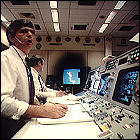 73 seconds after liftoff, Space Shuttle Challenger explodes when a rubber O-ring designed to be a tight seal between solid rocket booster segments allows flames from the booster to breach the shuttle’s external fuel tank, causing the tank’s highly flammable contents to ignite. The shuttle is destroyed with all hands aboard. Later analysis reveals that frigid cold temperatures in the nights leading up to the launch allowed the booster’s O-rings to become brittle enough to break – a possibility that NASA had been warned of by engineers at Morton-Thiokol, the contractor responsible for the solid rocket boosters.
73 seconds after liftoff, Space Shuttle Challenger explodes when a rubber O-ring designed to be a tight seal between solid rocket booster segments allows flames from the booster to breach the shuttle’s external fuel tank, causing the tank’s highly flammable contents to ignite. The shuttle is destroyed with all hands aboard. Later analysis reveals that frigid cold temperatures in the nights leading up to the launch allowed the booster’s O-rings to become brittle enough to break – a possibility that NASA had been warned of by engineers at Morton-Thiokol, the contractor responsible for the solid rocket boosters.
Lost in the explosion are Commander Francis R. Scobee, Pilot Michael Smith, mission specialists Judy Resnik, Ellison Onizuka and Ronald McNair, and payload specialists Gregory Jarvis and Christa McAuliffe, the highly-publicized first “teacher in space.”
The Space Shuttle program is grounded for over two years during an investigation and an extensive review of safety and launch procedures.
STS-61A
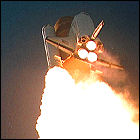 Space Shuttle Challenger lifts off on a one-week mission to carry the Spacelab module and an all-German crew to orbit. The “Spacelab D1” mission is flown by Commander Henry Hartsfield, Pilot Steven Nagel, mission specialists James Buchli, Guion Bluford, and Bonnie Dunbar, and payload specialists Reinhard Furrer, Ernst Messerschmid and Wubbo J. Ockels.
Space Shuttle Challenger lifts off on a one-week mission to carry the Spacelab module and an all-German crew to orbit. The “Spacelab D1” mission is flown by Commander Henry Hartsfield, Pilot Steven Nagel, mission specialists James Buchli, Guion Bluford, and Bonnie Dunbar, and payload specialists Reinhard Furrer, Ernst Messerschmid and Wubbo J. Ockels.
This is the final successful launch of Challenger.
STS-51F: Challenger aborts to orbit
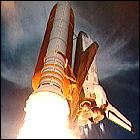 For the first and only time in the history of the shuttle program, Space Shuttle Challenger does an in-flight abort maneuver – in this case, an Abort To Orbit (ATO) following the premature shutdown of one of the shuttle’s main engines. The potentially catastrophic shutdown of a second engine is narrowly avoided by a sharp-eyed ground controller, and Challenger makes it to orbit and the rest of the mission is conducted normally.
For the first and only time in the history of the shuttle program, Space Shuttle Challenger does an in-flight abort maneuver – in this case, an Abort To Orbit (ATO) following the premature shutdown of one of the shuttle’s main engines. The potentially catastrophic shutdown of a second engine is narrowly avoided by a sharp-eyed ground controller, and Challenger makes it to orbit and the rest of the mission is conducted normally.
STS-51B
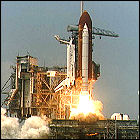 Space Shuttle Challenger lifts off on a week-long mission to perform experiments in the cargo-bay-mounted Spacelab laboratory module. Aboard Challenger for the Spacelab 3 flight are Commander Robert Overmyer, Pilot Frederick Gregory, mission specialists Don Lind, Norm Thagard, and William Thornton, and payload specialists Lodewijk van den Berg and Taylor Wang. Following the landing gear damage experienced by Discovery on its last flight, Challenger makes its landing at Edwards Air Force Base.
Space Shuttle Challenger lifts off on a week-long mission to perform experiments in the cargo-bay-mounted Spacelab laboratory module. Aboard Challenger for the Spacelab 3 flight are Commander Robert Overmyer, Pilot Frederick Gregory, mission specialists Don Lind, Norm Thagard, and William Thornton, and payload specialists Lodewijk van den Berg and Taylor Wang. Following the landing gear damage experienced by Discovery on its last flight, Challenger makes its landing at Edwards Air Force Base.
STS-41G
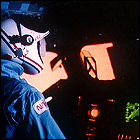 Space Shuttle Challenger lifts off on an eight-day mission, the first shuttle mission with a seven-person crew, which also happens to be the first American shuttle crew with two women on board. A satellite to study radiation around the Earth is deployed, along with an experiment to study the feasibility of refueling empty satellites to extend their service life. Challenger’s crew for this flight consists of Commander Robert Crippen, Pilot Jon McBride, mission specialists Kathryn Sullivan, Sally Ride, David Leestma and payload specialists Marc Garneau and Paul Scully-Power.
Space Shuttle Challenger lifts off on an eight-day mission, the first shuttle mission with a seven-person crew, which also happens to be the first American shuttle crew with two women on board. A satellite to study radiation around the Earth is deployed, along with an experiment to study the feasibility of refueling empty satellites to extend their service life. Challenger’s crew for this flight consists of Commander Robert Crippen, Pilot Jon McBride, mission specialists Kathryn Sullivan, Sally Ride, David Leestma and payload specialists Marc Garneau and Paul Scully-Power.
STS-41C
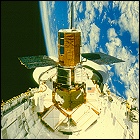 Space Shuttle Challenger lifts off on the first mission to retrieve a satellite in orbit, repair it, and release it back into that orbit. Launched in 1980, prior to the first shuttle mission, the Solar Maximum (Solar Max) Satellite is outfitted with a mechanism to allow the shuttle’s remote manipulator arm to grasp it; however, two astronauts using Manned Maneuvering Units still have to nudge it into Challenger’s cargo bay. With repairs completed, Solar Max is returned to its orbit, where it lasts until 1989. Challenger’s crew on this flight consists of Commander Bob Crippen, Pilot Francis Scobee, and mission specialists Geroge Nelson, James Van Hoften and Terry Hart.
Space Shuttle Challenger lifts off on the first mission to retrieve a satellite in orbit, repair it, and release it back into that orbit. Launched in 1980, prior to the first shuttle mission, the Solar Maximum (Solar Max) Satellite is outfitted with a mechanism to allow the shuttle’s remote manipulator arm to grasp it; however, two astronauts using Manned Maneuvering Units still have to nudge it into Challenger’s cargo bay. With repairs completed, Solar Max is returned to its orbit, where it lasts until 1989. Challenger’s crew on this flight consists of Commander Bob Crippen, Pilot Francis Scobee, and mission specialists Geroge Nelson, James Van Hoften and Terry Hart.
Manned Maneuvering Unit
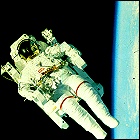 Astronaut Bruce McCandless becomes the first untethered human spacewalker when he leaves the cargo bay of Space Shuttle Challenger aboard a Manned Maneuvering Unit, a jetpack-like device allowing him to maneuver freely with no hoses or cables connecting him to the shuttle. In development since the Gemini era, and tested briefly aboard Skylab in prototype form, the MMU will see use on only three missions before NASA puts it in mothballs.
Astronaut Bruce McCandless becomes the first untethered human spacewalker when he leaves the cargo bay of Space Shuttle Challenger aboard a Manned Maneuvering Unit, a jetpack-like device allowing him to maneuver freely with no hoses or cables connecting him to the shuttle. In development since the Gemini era, and tested briefly aboard Skylab in prototype form, the MMU will see use on only three missions before NASA puts it in mothballs.
STS-41B
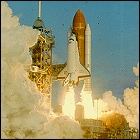 Space Shuttle Challenger lifts off on a satellite delivery mission, but the launches of both satellites go awry when their boosters (the Payload Assist Modules designed to launch satellites from the shuttle) put them in the wrong orbits. A German satellite is retrieved, repaired, and placed back into its orbit. A few days after launch, a member of Challenger’s crew will become the first free-floating human satellite. On this flight, Challenger’s crew consists of Commander Vance Brand, Pilot Robert Gibson, mission specialists Bruce McCandless, Ronald McNair and Robert Stewart. This is the first shuttle flight to end on the runway at Kennedy Space Center, eliminating the need for a costly, time-consuming 747 ferry flight to retrieve the shuttle from Edwards Air Force Base.
Space Shuttle Challenger lifts off on a satellite delivery mission, but the launches of both satellites go awry when their boosters (the Payload Assist Modules designed to launch satellites from the shuttle) put them in the wrong orbits. A German satellite is retrieved, repaired, and placed back into its orbit. A few days after launch, a member of Challenger’s crew will become the first free-floating human satellite. On this flight, Challenger’s crew consists of Commander Vance Brand, Pilot Robert Gibson, mission specialists Bruce McCandless, Ronald McNair and Robert Stewart. This is the first shuttle flight to end on the runway at Kennedy Space Center, eliminating the need for a costly, time-consuming 747 ferry flight to retrieve the shuttle from Edwards Air Force Base.
STS-8: first African-American in space
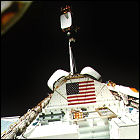 Taking off on a six-day satellite deployment mission, Space Shuttle Challenger also lifts the first African-American astronaut into orbit. A satellite deployment is carried out for India, along with continuing experiments to observe the performance of the shuttle in conditions of extreme cold with limited exposure to the sun. Aboard Challenger for this flight are Commander Richard Truly, Pilot Daniel Brandenstein, and mission specialists Dale Gardner, Guion Bluford, and William Thornton.
Taking off on a six-day satellite deployment mission, Space Shuttle Challenger also lifts the first African-American astronaut into orbit. A satellite deployment is carried out for India, along with continuing experiments to observe the performance of the shuttle in conditions of extreme cold with limited exposure to the sun. Aboard Challenger for this flight are Commander Richard Truly, Pilot Daniel Brandenstein, and mission specialists Dale Gardner, Guion Bluford, and William Thornton.
STS-7: first American woman in space
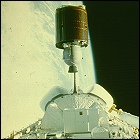 The second flight of Space Shuttle Challenger is a six-day mission to launch two more communications satellites (one for Canada and one for Indonesia), as well as featuring the first American woman in space (20 years behind the Soviet Union’s launch of Valentina Tereshkova). Challenger’s crew for this flight consists of Commander Robert Crippen, Pilot Frederick Hauck, and mission specialists John Fabian, Sally Ride and Norm Thagard.
The second flight of Space Shuttle Challenger is a six-day mission to launch two more communications satellites (one for Canada and one for Indonesia), as well as featuring the first American woman in space (20 years behind the Soviet Union’s launch of Valentina Tereshkova). Challenger’s crew for this flight consists of Commander Robert Crippen, Pilot Frederick Hauck, and mission specialists John Fabian, Sally Ride and Norm Thagard.
STS-6: Challenger’s first flight
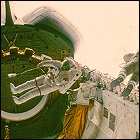 Space Shuttle Challenger lifts off into orbit for the first time, after extensive technical and mechanical issues keep the shuttle on the pad well past its original January launch date. The payload for this flight is NASA’s own TDRS (Tracking & Data Relay Satellite), designed to keep the shuttle in constant contact with ground controllers even if its orbit takes it out of direct communications. The five-day flight also sees the first spacewalk of the shuttle program. Challenger’s crew consists of Commander Paul Weitz, Pilot Karol Bobko, and mission specialists Donald Peterson and Story Musgrave.
Space Shuttle Challenger lifts off into orbit for the first time, after extensive technical and mechanical issues keep the shuttle on the pad well past its original January launch date. The payload for this flight is NASA’s own TDRS (Tracking & Data Relay Satellite), designed to keep the shuttle in constant contact with ground controllers even if its orbit takes it out of direct communications. The five-day flight also sees the first spacewalk of the shuttle program. Challenger’s crew consists of Commander Paul Weitz, Pilot Karol Bobko, and mission specialists Donald Peterson and Story Musgrave.
Challenger rollout
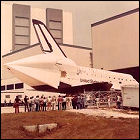 Completely refitted from a lightweight airframe originally fabricated for stress, vibration and thermal testing, Space Shuttle Challenger is rolled out of her Rockwell International assembly plant in Palmdale, California. Experience gained in the construction of Challenger’s sister ship, Columbia, means that the second completed shuttle in the fleet is over one ton lighter than Columbia. Challenger would make her first flight in just under a year.
Completely refitted from a lightweight airframe originally fabricated for stress, vibration and thermal testing, Space Shuttle Challenger is rolled out of her Rockwell International assembly plant in Palmdale, California. Experience gained in the construction of Challenger’s sister ship, Columbia, means that the second completed shuttle in the fleet is over one ton lighter than Columbia. Challenger would make her first flight in just under a year.
Christening the fleet
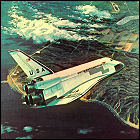 After several years of referring to the various Space Shuttle orbiters both under construction and in planning by numbers, NASA bestows names upon the anticipated fleet of four orbiters. OV-102, which is still expected to fly “late this year”, is named Columbia, while OV-099, undergoing conversion from a test article to flight-worthy vehicle, is named Challenger. Orbiters 103 and 104 will be named, respectively, Discovery and Atlantis; all four names are drawn from historical seafaring exploration vessels. (NASA has also used some of the names before: Columbia was the name of the moon-orbiting command module in the Apollo 11 mission, while Apollo 17’s lunar lander was named Challenger.)
After several years of referring to the various Space Shuttle orbiters both under construction and in planning by numbers, NASA bestows names upon the anticipated fleet of four orbiters. OV-102, which is still expected to fly “late this year”, is named Columbia, while OV-099, undergoing conversion from a test article to flight-worthy vehicle, is named Challenger. Orbiters 103 and 104 will be named, respectively, Discovery and Atlantis; all four names are drawn from historical seafaring exploration vessels. (NASA has also used some of the names before: Columbia was the name of the moon-orbiting command module in the Apollo 11 mission, while Apollo 17’s lunar lander was named Challenger.)
STA-099 to OV-099
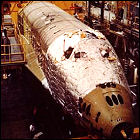 With a newly-awarded NASA contract in hand, Rockwell International begins the process of converting Space Shuttle Structural Test Article 099 into the Orbiter Vehicle 099, later to be christened Space Shuttle Challenger. A process originally envisioned for the test vehicle Enterprise, it is deemed more cost-effective and faster to upgrade STA-099 into OV-099. The first order of business is the construction of a new crew module, since the corresponding section of STA-099 was never actually intended to house human beings.
With a newly-awarded NASA contract in hand, Rockwell International begins the process of converting Space Shuttle Structural Test Article 099 into the Orbiter Vehicle 099, later to be christened Space Shuttle Challenger. A process originally envisioned for the test vehicle Enterprise, it is deemed more cost-effective and faster to upgrade STA-099 into OV-099. The first order of business is the construction of a new crew module, since the corresponding section of STA-099 was never actually intended to house human beings.
STA-099
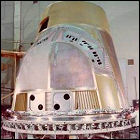 Construction begins on Space Shuttle Structural Test Article 099 (STA-099), a full-sized structural model of the shuttle built for stress and thermal testing. Four years later, NASA decides to abandon plans to refit the test shuttle Enterprise for space duty at great expense, instead opting to upgrade the STA-099 airframe into a spaceworthy vehicle, which will eventually be named Challenger. While the refit will still be expensive, it takes less time and money than a complete teardown and rebuild of Enterprise’s airframe, which was never intended for flight outside the atmosphere.
Construction begins on Space Shuttle Structural Test Article 099 (STA-099), a full-sized structural model of the shuttle built for stress and thermal testing. Four years later, NASA decides to abandon plans to refit the test shuttle Enterprise for space duty at great expense, instead opting to upgrade the STA-099 airframe into a spaceworthy vehicle, which will eventually be named Challenger. While the refit will still be expensive, it takes less time and money than a complete teardown and rebuild of Enterprise’s airframe, which was never intended for flight outside the atmosphere.